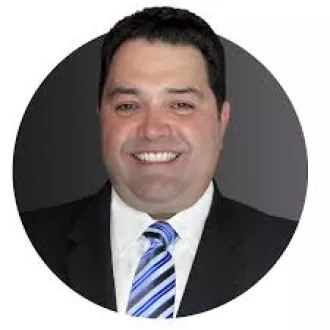Artificial intelligence isn’t just knocking on the door of education; it’s already here, reshaping the landscape of classrooms and campuses across the nation. In a groundbreaking move, NEA members approved the first-ever policy statement on the use of artificial intelligence (AI) in education over the summer. This policy statement empowers educators to have a voice in how AI tools are used in our schools.
“Where AI once seemed like something coming in the future, it’s clear the future is now,” said NEA Secretary-Treasurer Noel Candelaria, who led the NEA task force dedicated to developing the policy statement. “We need to be at the forefront of how this technology is evaluated and used.”
Since the fall of 2023, task force members, who include teachers, education support professionals, higher-ed faculty, and others, have been meeting and talking with other educators and experts. Their policy statement, reviewed by NEA members at the annual Representative Assembly, passed by an overwhelming majority.
“Navigating this significant technological shift will require intense attention and cooperation by schools, educators, state and local affiliates, administrators, and communities,” said NEA President Becky Pringle. “Above all else, the needs of students and educators should drive AI’s use in education-–and educators must be at the table to ensure these tools support effective teaching and learning for all students, regardless of ZIP code.”
Humans are at the Heart of Learning
Last year, just half of middle and high school teachers said they’d used AI at school or personally. This year, that number shot up to more than 8 out of 10, according to a June report from the nonprofit, nonpartisan Center for Democracy & Technology. Meanwhile, 93 percent of those teachers say their students are using it too.
Among faculty and college students, the percentages are similar: only 22 percent of faculty reported using AI tools in 2023, Inside Higher Ed reported last year, while twice as many students said the same.
AI is here—in classrooms, in school districts, and on higher-ed campuses across the nation. But today, less than half of U.S. states have official policies about AI to guide educators and students.
The new NEA policy statement will help educators to navigate these new waters as state and local policies and practices are developed.
First and foremost, the new NEA policy statement demands that “students and educators remain at the center of education.” Educators—that is human beings—inspire, motivate and guide students, and the connection between them is the beating heart of learning.
“The use of AI should not displace or impair that connection,” the statement says.
Additionally, the policy statement’s key principles suggest that AI can be used to enhance education, if it’s used responsibly; that educator and student data must be protected; that equitable access must be ensured; and that educators and students must be given opportunities to learn about AI.
“As we dove into this work, it became really clear that we need educators to be part of the process,” said Wil Page, a sixth-grade math and social studies teacher in Los Angeles who served on the task force. “Whether it’s working with [AI] developers or working to implement tools and policies in districts and states, we need continuous educator involvement.”
Quote byNoel Candelaria , NEA Secretary-Treasurer

AI: Opportunities and Risks
Educators, especially those who have been learning about AI as members of the task force, say the new technology poses some exciting opportunities for educators. Chief among them is the opportunity to modify and differentiate their instructional methods and materials for students with disabilities.
This kind of adaptive technology can help make classrooms from pre-K through higher education more inclusive and equitable for students with disabilities, as well as for emergent multilingual learners. “It’s a potential thought-partner to differentiate for different needs,” says Angie Powers, a Kansas high school teacher who also served on the NEA task force.

At the same time, AI also brings risks, including the potential to worsen biases. Technology developers are overwhelmingly white, straight men without disabilities, according to Stack Overflow’s 2022 Developer Survey. Consequently, AI products may not reflect students’ or educators’ diversity. "We don't want to shirk away from the fact that developers don't look like our students in our classrooms. Those biases are baked in," said Powers.
Because of these embedded biases, the new NEA policy statement makes clear that AI shouldn’t be used to make important, high-stakes decisions, like whether students can take advanced classes or graduate.
It’s also critically important for students, educators and caregivers from traditionally marginalized groups, including people with disabilities, Native students and educators, and educators and students of color, to have a voice when districts are adopting AI technology or creating AI-related policies. “We need to ensure that everybody is involved in AI development so that, in the future, it’s truly, truly inclusive. For me, that’s exciting!” said Candelaria.
Another risk? AI has the potential to accelerate climate change, educators note. A single AI query uses at least four or five times as much energy to power as a simple search-engine request, experts told Wired last year.
What's Next?
Few educators feel prepared for AI in their workplaces. Indeed, more than 7 in 10 K-12 teachers have never received professional learning on AI, according to a 2024 EdWeek Research Center survey, and the numbers are likely even lower for paraeducators and other staff members, said Candelaria, during last month’s hearing.
It’s critical that professional learning be provided to educators—throughout their academic and professional lives—so that they can use AI effectively and ethically and also teach their students how to use it effectively and ethically.
This doesn’t just mean understanding AI terms or knowing how to phrase a question for a chatbot. It means understanding AI bias and being aware of ethical considerations.
“Artificial intelligence has evolved into a permanent fixture in our communities and schools,” said Pringle. “Using these new tools equitably, fairly, and safely is essential for our nation’s educators to guide and inspire their students and classes.”
Years ago, when educators talked about the “digital divide,” they were talking about access to high-speed internet and computers in classrooms and homes. Today, NEA task members are talking about access to AI. It absolutely should not be restricted to the most advanced students or most well-resourced schools. “I’m most concerned about exacerbating the digital divide,” said Page.
All students should have access to cutting-edge technology and educators who are skilled in helping them use it. This needs to happen across curriculum, not just in computer science classes—“but in all classes,” said Powers.
“To me, we’re right on the cutting edge [with this policy]. The work of the task force, by members and staff, has been really phenomenal,” said Page. “I see it being used as a guide for state and local affiliates, ensuring that unionism is at the table… and ensuring that educators have a voice.”
What does the research say?

With the increase in students using AI—and, in particular ChatGPT—a research group that helps students make decisions about higher education called Intelligent.com conducted a survey of current high school teachers and college professors.
The findings show many educators are changing how they teach to “combat ChatGPT use.” Amongst the findings:
- 50% of educators are resorting to handwritten assignments
- 6 in 10 believe ChatGPT can help students learn, with many saying the tool is a mixed blessing
- More than 1 in 4 say their school has no ChatGPT policy in place
- Older educators are less likely to see the AI tool as beneficial
- Many educators who do not currently require handwritten essays are planning on making changes, ranging from requiring oral presentations to having students type assignments in class without Wi-Fi.


